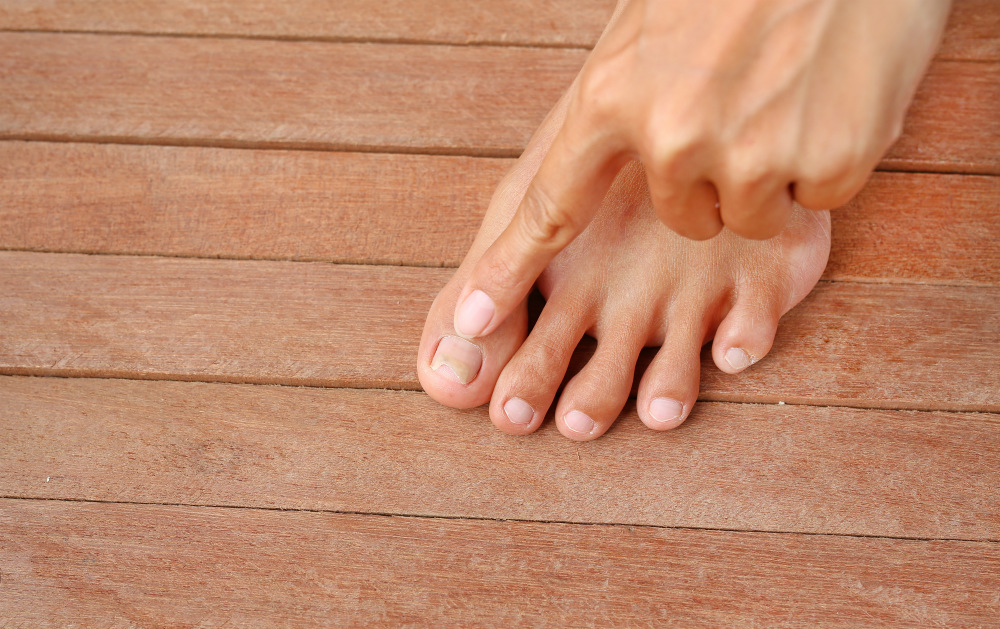Fungal Toenails
What are fungal toenails?
Fungal toenails are an unsightly and often deeply frustrating infection that affects millions of Americans each year. The condition is caused by the same group of fungi that causes skin infections like athlete’s foot and ringworm.
You can experience symptoms such as:
- Discoloration of the nail, often to a yellowish or brownish shade.
- Nails that are thick, brittle, crumbly, ragged, warped, or deformed in other ways.
- A buildup of debris underneath the nail.
- Foul odor.
Although fungal toenails are usually not painful or medically dangerous for healthy patients, they can cause difficulties beyond the mental and emotional stress that goes along with this condition. They can also spread to other toes, other parts of the body (such as as athlete’s foot), or to other people. Finally, if they are ignored long enough and become especially serious, they can cause physical pain or secondary bacterial infections, especially if your immune system has been compromised (for example, by diabetes).
Since fungal toenails get harder to treat as they get progressively worse, we strongly recommend you get them treated as early as possible.
What are my treatment options?
There are four main treatment options we offer for fungal toenails—laser, oral medications, topical medications, and nail removal.
Laser treatment
Laser is the newest, most advanced, and typically most effective treatment remedy available for fungal toenails. The technology uses a germicidal beam of light that is set at just the right power, wavelength, and frequency to both pass through the thickened toenail and kill the fungi that cause fungal nails—all without harming any of your healthy cells.
There are many other significant advantages to laser treatment that make it an attractive option:
- Cure rates are as good or better than other treatment options.
- The procedure only takes about 30 minutes (for all 10 toes combined), and most people only require 2-4 treatments spaced out over a few weeks to eradicate the fungus.
- The procedure is painless and there are no known side effects.
- You can walk in and walk out of your appointment—no down time.
The only real downside of laser treatment is that some insurance companies will not cover the procedure, making it a more expensive option for certain patients. We do offer financing options, including CareCredit, to help make treatments more affordable. Either way, we will talk with you at your appointment about the costs and benefits of the procedure versus other options.
Traditional treatment options
We still do offer and perform other treatment options for fungal toenails, including:
- Oral antifungal medications. Oral antifungals were the primary treatment option before laser. It remains the most common treatment in most podiatry offices, and is a relatively effective option for most people. That said, oral medications do have downsides. Strong antifungals may cause uncomfortable side effects for systemic organs, particularly the liver and kidneys. You also need to take them every day for 6-12 weeks.
- Topical medications. Topicals may be used in combination with other treatments, or on their own if oral medications cannot be taken safely. However, this is by far the most ineffective option, with very low cure rates. Because the nail is so thick, it is difficult for the medicine to reach the fungi.
- Surgical removal of the toenail. This is a more aggressive option that might be considered for cases where fungal toenails either resist treatment or keep reoccurring. Because it’s the most painful option and can sometimes lead to complications or unpleasant cosmetic effects, we do try to save it as a last resort only.
How soon will I see improvement?
Unfortunately, this will take time. Even if the fungal infection has been cured, the damage to your nail will remain behind for as long as it takes for new, healthy nail to grow in and replace it. Although you may see some improvement within the first few months, it typically takes anywhere from 9 to 12 months for a toenail to completely replace itself.
Will my fungal toenails keep coming back?
There is always a chance that the infection could return. The best way to avoid this is to keep your feet healthy and clean, and minimize the risk of exposure to fungi. Strategies include:
- Wash your feet every day.
- Use antifungal sprays or powders in your shoes.
- Wear breathable, moisture-wicking socks and shoes.
- Change socks and shoes as soon as they become damp, and give your shoes at least 24 hours to dry out after you wear them.
- Avoid going barefoot in public places, especially in wet and humid areas.
- Don’t share towels or clothes with other infected individuals.
- Treat any fungal skin infections immediately—they can spread to your toenails.
If you have fungal toenails, give us a call today at (520) 545-0202, or request an appointment with our online form, to review your treatment options and get those healthy nails back!
Contact Us
Office Hours:
Monday - Friday
8:00AM - 5:00PM
Tucson Foot & Ankle Institute:
7406 N. La Cholla Blvd.
Tucson, AZ 85741
Phone: (520) 545-0202
Fax: (520) 545-0201
© Tucson Foot and Ankle Institute. All Rights Reserved. | Privacy Policy



